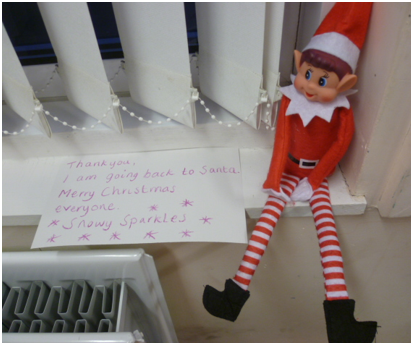Creative Christmas Learning in Early Years
Ah, Christmas time in the Reception classroom – where the joy is contagious, the excitement is palpable, and the tinsel crowns are perpetually slipping off little heads. It’s a time full of giggles, chaos, and, of course, a certain cheeky elf or two.
Now, settle in, my friends, because I have a little tale to share. It’s about a very grumpy Reception teacher who wasn’t exactly thrilled at the idea of embracing those mischievous little elves… at first.
It all began one chilly November morning, just as the first frost settled on the ground. Our ever-optimistic Reception teacher turned to the Early Years leader and asked the all-important question: "So, what’s the elf going to be up to this year?"
Cue the dramatic eye-roll from our not-so-festive Early Years leader, whose face practically screamed, "I’m too busy for this elf nonsense!" But the reception teacher, ever the Christmas enthusiast, wasn’t having any of it. "Oh, we’ll come up with something," he said, eyes twinkling. And so, despite the leader’s reluctance, the wheels were set in motion.


Soon enough, a tiny door mysteriously appeared in each classroom – and with it, the start of a very cheeky elf takeover. And as you can probably guess, the children were thrilled. Every morning, they’d race into the classroom, eagerly scanning for signs of the elf’s latest antics. It wasn’t long before the Reception teachers noticed just how much the children cared about the elf’s mischief.
But let’s be honest: it’s not all fun and games when you forget to move the elf the night before and then have to frantically scramble to figure out what on earth the little guy’s been up to. No pressure, right?
Despite the stress of elf-moving duties (which I’m sure we can all relate to), the teachers couldn’t help but notice how much language development the elves were sparking. The children were talking about them non-stop, using past and present tenses, predicting what the elf might do next, and coming up with all sorts of creative ideas for their next adventures.
Fast-forward to the following year. The Grinchy Early Years leader had, shall we say, softened a bit. By the time December rolled around, the elf was no longer a nuisance – it was embraced. With open arms, of course. This time, the teachers saw the potential for learning in every little elf antic.


They documented the elf's misadventures through modelled writing, complete with symbols and speech bubbles. The children not only remembered what had happened but also eagerly shared their own stories, drawing pictures and adding labels and words to express their ideas. The days of the week and time-related language became second nature as they talked about "yesterday," "today," and "tomorrow," even referencing the dates on their advent calendars.
By the time it came to bid farewell to the elf, the children were heartbroken. They were so motivated to write and send messages to their little friend – letters filled with wishes, greetings, and thanks.
And you know what? The Reception teachers couldn’t help but reflect on how much their children had learned. They were writing for real purposes, inspired by their greatest fascination: Christmas! The power of interest-based learning, right there.
So, if you’re finding it tricky to motivate your pupils to write and hold a sentence in their head (we’ve all been there), maybe it’s time to try a little Christmas magic. Incorporating things your students are genuinely excited about – like cheeky elves, for example – can do wonders for engagement, motivation, and, most importantly, learning.

Ready to find out more?
If you need some help with that, I’ve got just the thing! Check out these training sessions that’ll help you build confidence, motivation, and foundational writing skills in your little learners. Start the New Year off right, with writing that’s meaningful and fun.

